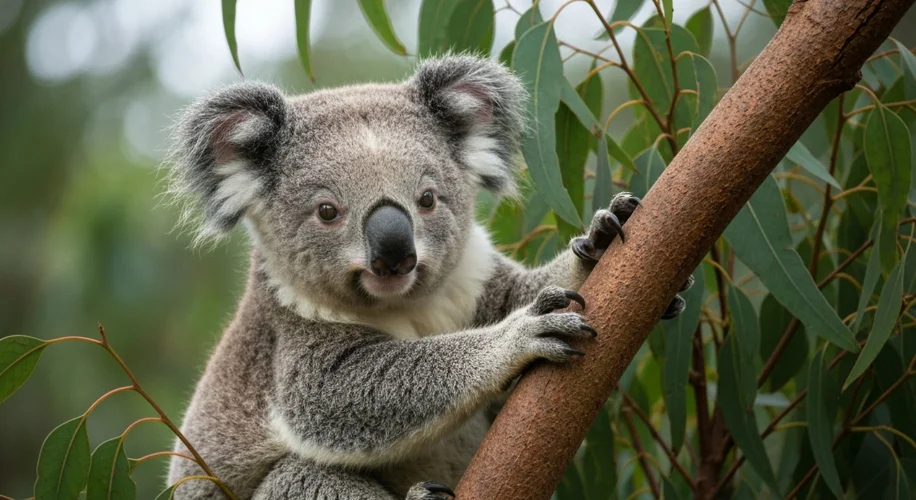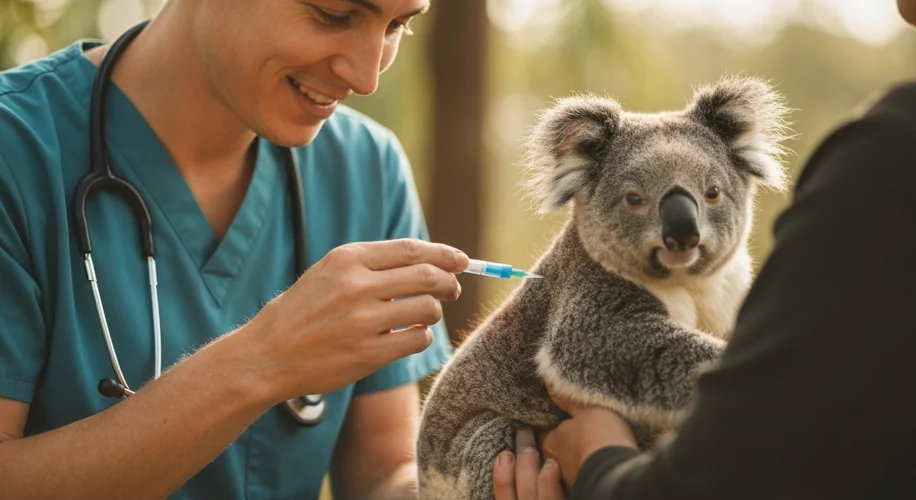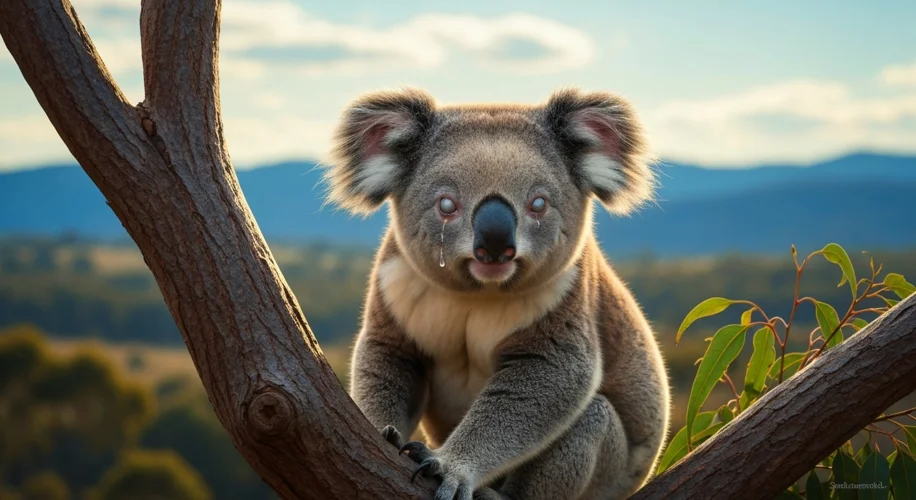In the sprawling, eucalyptus-scented wilderness of Australia, a silent crisis has been unfolding for decades. It’s a story of a beloved national icon, the koala, facing a devastating epidemic that threatens its very existence. The culprit? A persistent and often deadly strain of Chlamydia. But today, a beacon of hope shines through: Australia has approved a vaccine, a critical step in curbing this relentless march of disease.
For years, the plight of the koala has been a growing concern. These marsupials, as emblematic of Australia as the Outback itself, have been battling not only habitat loss and climate change but also an insidious bacterial infection. Chlamydia, a sexually transmitted disease in humans, manifests in koalas with brutal efficiency. It can lead to blindness, infertility, painful urinary tract infections, and even death. The sight of a once-vibrant koala struggling with the debilitating effects of the disease has become a tragic, all-too-common reality in Australian wildlife hospitals and rehabilitation centers.

The historical roots of this epidemic are complex, intertwined with the introduction of agriculture and increasing human proximity to koala populations. While the bacteria, Chlamydia pecorum, is naturally found in many Australian animals, certain strains have adapted to become particularly virulent in koalas, especially in populations stressed by other environmental factors. Early research in the 1970s and 1980s began to shed light on the prevalence and impact of chlamydia in koalas, but it wasn’t until more recently that the full scale of the problem, and the urgent need for intervention, became undeniable.
The key actors in this ongoing narrative are not just the koalas themselves, but the dedicated veterinarians, wildlife researchers, conservationists, and policymakers who have worked tirelessly to understand and combat the disease. For them, each koala treated, each successful vaccination, represents a hard-won victory against overwhelming odds. Their perspectives are often marked by a deep emotional connection to these creatures, coupled with the scientific rigor required to develop effective treatments and preventative measures.
The newly approved vaccine represents a monumental achievement, born from years of research and development. This isn’t a simple one-shot cure, but a sophisticated approach to building immunity within koala populations. The vaccine works by targeting specific proteins of the Chlamydia pecorum bacteria, stimulating the koala’s immune system to fight off infection. The challenge now is to administer this vaccine effectively across vast and often rugged terrains, reaching as many koalas as possible.
This is where the story takes a turn from despair to a glimmer of determined optimism. The rollout of the vaccine is a meticulously planned operation, involving trapping koalas, administering the jab, and often, fitting them with identification for monitoring. It’s a delicate dance with nature, requiring patience and precision. Researchers are hopeful that widespread vaccination will significantly reduce the transmission of the disease, improve koala fertility rates, and ultimately, bolster wild populations against this devastating epidemic.
The consequences of inaction have been stark. Koala numbers have plummeted in many regions, pushing them closer to extinction. The ecological balance is also affected; a decline in koalas can have ripple effects on the eucalyptus forests they inhabit. The approval of the vaccine is thus not just a victory for koalas, but a crucial step in preserving Australia’s unique biodiversity.

Looking at this development through a historical lens, it’s a testament to the enduring human capacity for scientific innovation in the face of ecological crises. From understanding the pathogen to developing a viable vaccine, the journey has been long and arduous. It echoes other instances where humanity has rallied to save species from the brink, demonstrating a growing awareness of our interconnectedness with the natural world.
However, the vaccine is not a silver bullet. Habitat protection, climate change mitigation, and ongoing research into other koala health issues remain paramount. This breakthrough offers a powerful new tool, but the long-term survival of the koala will depend on a multifaceted approach that addresses all the threats they face. The story of koala chlamydia and its new vaccine is a potent reminder that even in the face of daunting challenges, determined effort and scientific ingenuity can offer hope for a healthier future for Australia’s most iconic marsupial.


